MEDICAL ·
How To Use Chest Seals

A lot of commercial trauma kits include a pair of chest seals, yet most people do not fully understand when, why, and how they should be used. As we include more advanced components like these in our Emergency Medical Kits we feel it is our duty to help educate our customers on the proper use of these products to help you and yours Get Home Alive. This article is not intended to replace actual professional training.
*Chest Seals are also sometimes referred to as “Occlusive Dressings”
When to use Chest Seals:
Chest seals should be used when an open chest injury occurs, meaning the chest wall is penetrated, leaving the chest cavity open to the atmosphere. Most commonly caused from penetrating trauma like a gunshot wound or knife.
*Chest Seals are also sometimes referred to as “Occlusive Dressings”
When to use Chest Seals:
Chest seals should be used when an open chest injury occurs, meaning the chest wall is penetrated, leaving the chest cavity open to the atmosphere. Most commonly caused from penetrating trauma like a gunshot wound or knife.
If the injury occurs between the chin and the belly button there is a chance that the injury has penetrated the chest wall.
Signs of an open chest wound include difficulty breathing and/or a sucking sound when the patient breathes. Remember that the penetrating object may have also severely injured organs inside the body.
Why Chest Seals are needed:
An open chest injury exposes the chest cavity to pressure from the outside air. When that air enters the cavity on inhalation the pressure balance inside the cavity is thrown off which causes the lung on the injured side to collapse.
The chest seal occludes or stops air from the outside from being sucked into the chest cavity on inhalation. A vented chest seal also allows for any excess air in the chest cavity the ability to vent out and help stop the development of Tension Pneumothorax. While the goal is to stop the lung from collapsing in the first place, the injured lung can re-inflate once a chest seal is applied and the chest cavity pressure normalizes.
What is Pneumothorax and Tension Pneumothorax?
Pneumothorax happens when air enters the chest cavity between the lung and chest wall which can lead to a collapsed lung.
Tension Pneumothorax occurs when air continues to fill the chest cavity after collapsing the injured lung. Without an ability for this air to escape (either due to the injury creating a one way valve or due to the injury site being sealed with a non-vented chest seal) the pressure continues to increase which puts stress on the heart, blood vessels, and the unaffected lung reducing the output of the heart and the lungs. This condition is deadly.
How to use Chest Seals:
Signs of an open chest wound include difficulty breathing and/or a sucking sound when the patient breathes. Remember that the penetrating object may have also severely injured organs inside the body.
Why Chest Seals are needed:
An open chest injury exposes the chest cavity to pressure from the outside air. When that air enters the cavity on inhalation the pressure balance inside the cavity is thrown off which causes the lung on the injured side to collapse.
The chest seal occludes or stops air from the outside from being sucked into the chest cavity on inhalation. A vented chest seal also allows for any excess air in the chest cavity the ability to vent out and help stop the development of Tension Pneumothorax. While the goal is to stop the lung from collapsing in the first place, the injured lung can re-inflate once a chest seal is applied and the chest cavity pressure normalizes.
What is Pneumothorax and Tension Pneumothorax?
Pneumothorax happens when air enters the chest cavity between the lung and chest wall which can lead to a collapsed lung.
Tension Pneumothorax occurs when air continues to fill the chest cavity after collapsing the injured lung. Without an ability for this air to escape (either due to the injury creating a one way valve or due to the injury site being sealed with a non-vented chest seal) the pressure continues to increase which puts stress on the heart, blood vessels, and the unaffected lung reducing the output of the heart and the lungs. This condition is deadly.
How to use Chest Seals:
- Check the patient for penetrating trauma between the chin & belly button, be sure to check for an exit wound.
- The exit wound may not be in line with the entrance wound.
- Upon finding a wound immediately place your gloved hand over it.
- Open the package and remove seals. Do not remove plastic backing to seals.
- Take gauze/cloth and wipe away any blood, sweat, debris from the wound area. Only remove your hand covering the wound to clean, then place it back on the wound.
- Place the chest seal next to the wound. Slowly remove the plastic backing while rolling the sticky side over the wound.
- The seal should be centered over the wound
- Verify that the seal is sticking and that no air is heard passing through the seal during inhalation. For vented chest seals make sure that the vent ports are not clogged up and are able to let excess air vent from the chest cavity.
- Repeat as necessary for additional wounds, ensure you seal any exit wounds.




